33 Unforgettable Japanese Fish Dishes Worth Tasting
Japanese fish dishes represent a culinary art form deeply rooted in ocean traditions and coastal flavors.
Seafood plays an integral role in national cuisine, reflecting centuries of maritime culture and refined cooking techniques.
Delicate preparations showcase the natural essence of marine ingredients with remarkable precision and skill.
Chefs transform oceanic treasures into elegant meals that celebrate freshness and subtle seasoning.
Regional variations highlight unique approaches to selecting, preparing, and presenting aquatic delicacies across different landscapes.
Sophisticated methods transform simple fish into extraordinary culinary experiences that tantalize sophisticated palates.
These remarkable preparations demonstrate unparalleled respect for ingredients and generations of inherited cooking wisdom.
Dive into these 33 exceptional Japanese fish dishes that promise a spectacular gastronomic journey:
Japanese Fish Dishes for Seafood Lovers
The Japanese approach to fish showcases balance, freshness, and technique. Artistic presentations turn even the simplest meals into something special.
Unadon
Unadon are luscious Japanese rice bowls featuring grilled eel with deep umami flavors that captivate Japanese cuisine enthusiasts.
Grilling follows a meticulous kabayaki technique where skilled cooks split, gut, and butterfly the eel into precise square portions.
Chefs generously brush the fish with a complex tare sauce blending soy sauce, mirin, sugar, and sake to create a glossy caramelized finish.
Skewering ensures even cooking and perfect grill marks across the succulent eel fillets.
Sansho berries provide a subtle peppery garnish that complements the rich, savory fish.
Steamed rice serves as the perfect foundation for these flavorful eel fillets.
Unadon represents a pinnacle of Japanese comfort food with its balanced textures and sophisticated preparation method.
Chutoro Nigiri Sushi
Chutoro nigiri sushi represents a premium Japanese delicacy featuring medium-fatty tuna slices draped over perfectly seasoned rice.
Skilled sushi chefs carefully select specific cuts from bluefin tuna to create this luxurious bite-sized treat.
Authentic preparation involves hand-pressing rice and topping it with precisely sliced chutoro, which offers a melt-in-your-mouth texture and rich, deep flavor.
Japanese diners traditionally enjoy this sushi piece by hand in a single bite, enhancing the sensory experience.
Restaurant patrons often pair chutoro nigiri with classic accompaniments like soy sauce, wasabi, or pickled ginger (gari).
Tuna grades range from akami (red meat) to otoro (fatty) and chutoro (medium-fatty), with chutoro considered a balanced, elegant option.
Professional sushi restaurants pride themselves on selecting the highest quality fish for this refined dish.
Maguro Nigiri Sushi
Maguro nigiri sushi are delicate hand-pressed rice morsels crowned with premium tuna slices that exemplify Japanese culinary precision.
Sushi chefs carefully select different tuna cuts ranging from otoro (luxurious fatty sections) to chutoro (medium-fatty) and akami (lean red meat) to create nuanced flavor profiles.
Restaurants often serve these bite-sized delicacies with traditional accompaniments like soy sauce, wasabi, and pickled ginger (gari).
Mild yet rich textures make these sushi pieces perfect for novice and experienced sushi enthusiasts.
Originating in Japan, maguro nigiri represents a minimalist approach to seafood preparation.
Professional sushi makers press rice by hand and top it with expertly sliced tuna.
Diners typically consume each piece in a single, elegant bite.
Tekkadon
Tekkadon is a minimalist Japanese rice bowl celebrating raw tuna's silky texture and fresh ocean flavors.
Originating in traditional sushi restaurants, this donburi-style dish features steamed rice topped with thin, sashimi-grade tuna slices.
Chefs carefully arrange ruby-red tuna pieces over vinegared rice, creating a stunning visual and gustatory experience.
Nori seaweed strips and delicate scallion rings provide additional color and subtle maritime notes.
Typically served with a small side of soy sauce, tekkadon offers divers a quick, protein-rich meal reflecting Japan's seafood culinary heritage.
Sometimes confused with maguro zuke don, this dish differs by using raw, unmarinated tuna and maintaining a pure, unadulterated flavor profile.
Otoro Nigiri Sushi
Otoro nigiri sushi represents supreme Japanese seafood luxury with its buttery bluefin tuna slice melting across perfectly seasoned rice.
Premium sushi chefs carefully select the fattiest part of tuna belly for this exquisite bite-sized delicacy.
Prized by connoisseurs worldwide, otoro commands high prices due to its rare, rich flavor profile.
Authentic preparation involves hand-pressing sushi rice and topping it with translucent, marbled tuna slices.
Experts grade otoro based on fat content and visual marbling patterns unique to each fish.
Traditional consumption requires eating the entire piece in one swift bite to fully appreciate its complex taste.
Small accompaniments like soy sauce, wasabi, and pickled ginger enhance the overall sensory experience.
Japanese fishing techniques and strict seafood selection ensure only the most exceptional tuna becomes this celebrated nigiri masterpiece.
Sashimi
Sashimi is a prized Japanese dish featuring razor-thin slices of pristine raw seafood or meat that showcase exceptional culinary precision.
Premium fish like tuna, salmon, and octopus form the core of this minimalist delicacy that celebrates pure ingredient quality.
Skilled chefs meticulously slice each piece to enhance texture and visual appeal, transforming simple ingredients into an art form.
Fresh fish arrives at the table adorned with elegant garnishes like shiso leaves, crisp cucumber, and delicate seaweed.
Accompaniments such as soy sauce, wasabi, and pickled ginger provide complementary flavor notes that enhance the fish's natural taste.
Traditionally served as an appetizer, sashimi demands exceptional ingredient freshness and expert knife skills.
Japanese restaurants pride themselves on selecting top-quality seafood for this refined dish.
Raw fish preparation requires strict food safety protocols to ensure a safe and memorable dining experience.
Sake Nigiri Sushi
Sake nigiri sushi are delicate hand-pressed rice morsels featuring fresh salmon slices that originate from Japanese culinary traditions with Norwegian salmon influences.
Norwegian salmon provides rich, buttery flavors and a smooth texture perfect for sushi newcomers seeking mild fish experiences.
Skilled sushi chefs carefully shape compact rice bases and elegantly layer thin salmon cuts across the top with precision.
Raw salmon delivers clean, subtle oceanic notes that complement the seasoned rice underneath.
Traditional eating etiquette involves consuming each piece in one single bite using fingers or chopsticks.
Small accompaniments like soy sauce, wasabi, and pickled ginger enhance the overall tasting experience.
Unagi Nigiri Sushi
Unagi nigiri sushi are delectable Japanese rice bites featuring grilled freshwater eel draped over seasoned rice.
Each piece delivers a rich umami flavor profile with tender, melt-in-your-mouth texture that seafood enthusiasts adore.
Japanese chefs meticulously prepare the eel by grilling and glazing it with sweet soy-based sauce for maximum taste complexity.
Restaurants often serve this sushi piece with complementary condiments like soy sauce and pickled ginger.
Originating from traditional Japanese cuisine, these rice-and-eel bites represent a sophisticated alternative to raw fish sushi options.
Diners typically enjoy unagi nigiri in a single, elegant bite.
Temaki
Temaki sushi rolls burst with Japanese street-style flavor and casual dining ease.
Restaurants rarely serve temaki, making it a special home-party favorite for families and social gatherings.
Japanese people consider these rolls an excellent introduction for foreigners curious about sushi traditions.
Diners typically enjoy temaki by hand, skipping chopsticks for a more direct eating experience.
Standard fillings include seasoned sushi rice, raw fish, and colorful vegetables.
Pickled ginger, wasabi, and complementary sauces like soy and ponzu enhance the overall taste profile.
These spontaneous, customizable rolls offer an interactive and delicious dining adventure.
Akami Nigiri Sushi
Akami nigiri represents a classic Japanese sushi style featuring premium red tuna meat atop perfectly pressed rice.
Chefs select lean, deep-red tuna slices rich in myoglobin and hemoglobin from migratory fish species like bonito.
Thick tuna cuts highlight the fish's naturally sticky and firm texture with minimal embellishments.
Premium akami nigiri showcases clean, intense ocean flavors without fatty distractions.
Skilled sushi makers carefully slice each piece to ensure uniform thickness and visual appeal.
Traditional accompaniments include pickled ginger, soy sauce, and wasabi for enhancing the fish's natural taste.
Restaurant patrons appreciate this pure, protein-focused sushi variant for its simplicity and fresh ingredients.
Japanese culinary traditions celebrate akami nigiri as an elegant, minimalist seafood experience.
Saltwater Eel Nigiri Sushi (Anago Nigiri Sushi)
Anago nigiri represents Japanese cuisine's delicate seafood mastery, featuring hand-pressed sushi rice crowned with tender saltwater eel slices carefully cooked to melt-in-your-mouth perfection.
Chefs meticulously prepare the eel by slowly breaking down its fat, which creates an incredibly smooth and fluffy texture unlike its denser cousin unagi.
Professional sushi makers select premium saltwater eel for its subtle flavor and silky consistency, distinguishing this traditional nigiri style from other seafood preparations.
Precise cooking techniques transform the eel into a luxurious delicacy that harmonizes with seasoned rice.
Japanese culinary traditions emphasize subtle flavor balance and ingredient quality in every bite.
Seasoned rice provides a perfect foundation for the soft, buttery eel slices.
Restaurant diners appreciate this elegant sushi style for its refined preparation and nuanced taste profile.
Skilled chefs elevate this simple yet sophisticated dish through generations of practiced technique.
Buri Nigiri Sushi
Buri nigiri sushi represents a classic Japanese delicacy featuring hand-pressed sushi rice crowned with premium slices of yellowtail fish native to Japanese waters.
Skilled sushi chefs carefully select fresh amberjack and slice it precisely to create a smooth, elegant topping for the compact rice base.
Winter months bring the most prized yellowtail, when the fish develops rich, buttery flavors from cold ocean currents.
Mild and less intense compared to salmon or tuna nigiri, buri offers a subtle marine taste that melts smoothly across your palate.
Professional sushi restaurants prize this nigiri for its delicate texture and clean, oceanic profile.
Yellowtail's natural fat content ensures a silky mouthfeel that distinguishes this sushi from other fish varieties.
Hamachi Nigiri Sushi
Hamachi nigiri sushi highlights delicate yellowtail fish served on perfectly seasoned rice.
Japanese chefs carefully slice young amberjack into thin, elegant pieces that rest atop compact rice mounds.
Mild yet rich flavors define this classic sushi preparation from Japan's coastal regions.
Yellowtail's buttery texture creates a smooth eating experience for seafood enthusiasts.
Professional sushi makers select premium fish to ensure maximum quality and freshness.
Hamachi's subtle taste differs from stronger fish like salmon or tuna.
Skillful hand-pressing techniques determine the nigiri's overall balance and presentation.
Rice temperature and fish quality significantly impact the final sushi experience.
Hitsumabushi
Hitsumabushi is a legendary Japanese grilled eel dish from Nagoya that transforms simple ingredients into a mesmerizing culinary experience.
Sliced unagi (eel) carefully grilled and placed over steamed rice creates its signature base, while unique serving techniques set it apart from traditional unadon.
Diners enjoy this specialty in four distinct stages, starting with pure eel and rice, then adding condiments like nori seaweed and wasabi, followed by pouring dashi broth or green tea to create a soup-like variation.
Each portion introduces new flavors and textures, encouraging eaters to explore different taste combinations.
Green onions and wasabi provide sharp, complementary notes that enhance the rich umami of the grilled eel.
Nagoya locals take pride in this regional delicacy that balances simplicity with sophisticated eating rituals.
Restaurant chefs meticulously prepare each element to ensure maximum flavor and presentation.
Fish lovers appreciate how this dish elevates unagi from a basic protein to a multisensory dining adventure.
Ankimo
Ankimo boasts a luxurious reputation as Japan's foie gras, crafted from monkfish liver prized for its rich, buttery texture.
Japanese chefs carefully clean and soak the liver in milk to remove any fishy odors before marinating it in sake and mirin.
Skilled preparation involves rolling the liver into a tight cylinder and gently steaming it to perfection.
Restaurants typically serve the delicate slices chilled, garnished with sharp scallions and grated daikon radish.
Traditional presentation includes a drizzle of tangy ponzu sauce that cuts through the liver's intense flavor.
Monkfish liver itself comes from deep sea waters around Japan, making each serving a rare oceanic treasure.
Himono
Himono are traditional Japanese dried fish that transform humble seafood into a culinary treasure through meticulous preservation techniques.
Japanese fishermen developed this method centuries ago to extend fish storage without refrigeration, using sun and salt to remove moisture and concentrate flavors.
Smaller fish like mackerel and sardines work best for himono, which are carefully butterflied and cleaned before drying.
Salt initially served as a critical preservation agent, though modern recipes often incorporate it for seasoning enhancement.
Skilled artisans prepare these fish by thoroughly removing internal organs and spreading them flat to ensure even drying.
Grilling becomes the preferred cooking method, where soy-based sauces add rich umami complexity to the dried fish.
Sophisticated yet simple, this technique represents centuries of Japanese culinary innovation in preserving ocean's bounty.
Saba Zushi
Saba zushi offers a unique pressed sushi experience featuring marinated mackerel layered over perfectly seasoned rice and wrapped in traditional bamboo leaves.
Japanese fishermen developed this technique to preserve mackerel during long voyages without refrigeration.
Mackerel's rich, oily texture provides a robust seafood flavor that complements the subtle rice underneath.
Kelp adds a thin, delicate covering that enhances the fish's natural taste profile.
Chefs carefully select fresh mackerel and prepare the fish through precise marination techniques.
Professional sushi makers take pride in creating this specialized pressed sushi style that balances texture and flavor.
Shirasu Don
Shirasu don showcases Japan's coastal culinary heritage with delicate baby sardines served over steaming rice.
Small white fish called shirasu transform simple rice into a regional delicacy from Kanagawa Prefecture.
Fishermen carefully harvest these tiny sardines from ocean waters near Chigasaki and Enoshima Island.
Local chefs prepare the fish by serving them raw, boiled, or dried with a light soy sauce drizzle.
Restaurants often source fresh catch directly from nearby fishing ports to ensure maximum flavor and quality.
Fresh shirasu provide a mild, slightly sweet seafood taste that melts in you mouth.
Diners appreciate the dish for its pristine ingredients and connection to traditional Japanese coastal cuisine.
Kamakura residents particularly celebrate shirasu don as a signature local meal reflecting their maritime culture.
Yakizakana
Yakizakana represents authentic Japanese cuisine through whole grilled fish prepared with minimalist precision and deep cultural respect.
Fishermen traditionally select fresh local catches like mackerel, salmon, or sea bream for this classic preparation.
Salt or miso marinades enhance natural seafood flavors before grilling over high heat, creating crispy exterior and tender inner flesh.
Japanese home cooks and restaurant chefs carefully grill fish until skin turns golden brown and meat becomes perfectly flaky.
Restaurants and households serve yakizakana throughout different meal times, from breakfast to dinner.
Diners typically enjoy the fish with steamed rice, pickled vegetables, and green tea.
Traditional presentation highlights the fish's natural shape and integrity, reflecting Japanese culinary philosophy of respecting ingredient quality.
Black Miso Cod
Black miso cod epitomizes Japanese seafood elegance through its luxurious umami-rich preparation method involving multiple-day miso marinade.
Japanese chefs carefully soak sablefish fillets in a sweet and savory blend of white miso paste, sugar, mirin, and occasionally sake for two to three days.
Grilling or broiling transforms the fish into a butter-soft delicacy with an irresistibly crispy exterior that melts in your mouth.
Professional kitchens worldwide have embraced this technique as a signature dish highlighting delicate fish potential.
Restaurant patrons appreciate its complex flavor profile that balances sweet, salty, and rich undertones.
Side dishes like steamed rice, soft tofu, wasabi mashed potatoes, and pickled vegetables complement the cod's intense taste.
Mirin and sake contribute depth to the marinade, creating a sophisticated flavor experience.
Professional and home chefs consider this dish a pinnacle of Japanese seafood preparation techniques.
Iwashi Nigiri Sushi
Iwashi nigiri sushi represents Japanese coastal cuisine with silvery sardines carefully draped over seasoned rice.
Fishermen along Japan's shorelines traditionally prepare this sushi using freshly caught sardines with intense oceanic flavors.
Regional chefs select premium sardines, skillfully pressing them atop compact rice mounds to create delicate bite-sized pieces.
Sardines bring robust umami characteristics with slightly tough textures that challenge delicate palates.
Professional sushi makers often lightly marinate or quickly grill sardines to soften their aggressive taste profile.
Salt and subtle citrus accompaniments help balance the fish's strong maritime notes.
Silver-skinned sardines provide significant protein and omega-3 nutrients for health-conscious diners.
Local Japanese restaurants consider iwashi nigiri a seasonal specialty showcasing ocean-fresh ingredients.
Tai-Meshi
Tai-meshi represents a prized Japanese seafood rice dish starring red sea bream, a fish symbolizing celebration and good fortune in Japanese cuisine.
Sea bream gets delicately seasoned with salt and sake before being lightly grilled to enhance its natural flavors.
Chefs carefully prepare a rich stock using kombu kelp, soy sauce, mirin, sake, and grated ginger to infuse deep umami into the rice.
Rice and fish cook together, creating a harmonious blend of textures and tastes that epitomize Japanese culinary precision.
Skilled cooks either stir the tender fish meat directly into fluffy rice or present the whole grilled fish atop the steaming grains.
Chopped chives and white sesame seeds add a fresh, aromatic garnish that complements the fish's delicate profile.
Buri Daikon
Buri daikon stands out as a comforting Japanese winter dish where succulent yellowtail fish simmers gently with daikon radish in a rich umami-packed broth.
Fishermen from coastal regions of Japan traditionally prepare this classic seafood recipe during cold months when yellowtail migrates closer to shore.
Soy sauce, sake, and sugar create a deep, glossy liquid that infuses the tender fish and radish with complex flavors.
Ginger adds a subtle warmth and sharp undertone to the simmering preparation.
Generations have enjoyed this simple yet elegant dish as a warming meal during winter gatherings.
Families often serve buri daikon with steamed rice, creating a complete and satisfying meal.
Hirame Nigiri Sushi
Hirame nigiri reveals seasonal ocean delicacies through premium olive flounder balanced on perfectly seasoned rice.
Japanese sushi chefs expertly hand-press rice and delicately layer thin slices of hirame across each compact morsel.
Winter months highlight this prized fish's peak flavor profile when the flounder develops maximum tenderness and subtle marine complexity.
Skilled preparation demands precise knife techniques to slice the fish with elegant, paper-thin precision.
Traditional sushi restaurants showcase hirame nigiri as a sophisticated cold-season specialty.
Olive flounder offers a distinctive chewy texture with mild, clean oceanic notes.
Restaurant patrons appreciate its gentle flavor that complements the vinegared rice foundation.
Experienced diners consider hirame nigiri a refined selection among seasonal sushi offerings.
Katsuo No Tataki
Katsuo no tataki represents a prized Japanese seafood delicacy where bonito (skipjack tuna) receives a unique preparation method from Kochi prefecture.
Chefs expertly sear the fish's exterior over burning straw, creating a signature smoky flavor while maintaining a raw interior.
Locals traditionally serve the fish sliced and accompanied by fresh ginger, minced garlic, and chopped spring onions.
Sea salt or soy sauce adds seasoning, while citrus and vinegar provide a tangy accent.
Straw fire grilling ensures the fish develops a charred surface with an intense aroma.
Izakaya bars throughout the region feature this distinctive dish as a popular menu item.
Regional cooking techniques highlight the bonito's natural flavors through minimal processing.
Expert preparation transforms simple ingredients into a memorable dining experience.
Nanbanzuke
Nanbanzuke are zesty Japanese vinegar-marinated fish fillets that transform simple seafood into a tangy, refreshing delicacy.
Japanese home cooks expertly fry small fish like yellowtail, smelt, blue mackerel, or whiting until crispy and golden.
Skilled chefs quickly immerse the hot fish into a flavorful marinade crafted from vinegar, sake, mirin, soy sauce, and sugar.
Crunchy vegetables such as onions, cucumbers, red chili, and carrots join the fish in the pickling liquid, adding layers of texture and flavor.
Mediterranean-inspired techniques influence the dish's preparation, creating a unique fusion of flavors.
Cool temperatures enhance the dish's appeal, making nanbanzuke a perfect summer meal.
Serving the fish chilled or at room temperature allows diners to appreciate its complex taste profile.
Saba Misoni
Saba misoni are succulent Japanese mackerel fillets slow-simmered in a rich, umami-packed sauce that transforms simple ingredients into a culinary masterpiece.
Japanese home cooks have perfected this traditional dish by carefully selecting fresh mackerel and creating a complex sauce using sake, soy sauce, mirin, miso, and sugar.
Fishermen from coastal regions originally developed this recipe to preserve and enhance mackerel's robust flavor.
Gentle cooking allows the fish to absorb the sweet and savory sauce while maintaining its tender texture.
Each fillet is carefully pan-cooked, with the sauce gradually reduced to create a glossy, intense coating.
Miso adds depth and complexity to the sauce, balancing the fish's natural oils.
Served hot with steamed rice, saba misoni offers a quintessential taste of Japanese home cooking that celebrates simplicity and flavor.
Fugu Chiri
Fugu chiri emerges as a daring Japanese seafood delicacy featuring the notorious pufferfish known for its potentially lethal toxins.
Skilled chefs meticulously prepare this hotpot-style dish by carefully removing poisonous parts of the fish before cooking.
Large chunks of fugu swim alongside fresh vegetables like cabbage, mushrooms, and leeks in a flavorful broth.
Professional preparation requires extensive training to safely handle the potentially dangerous fish.
Diners watch as the dish cooks tableside, creating an interactive dining experience.
Each carefully sliced fish piece gets dipped in soy sauce after cooking.
Restaurants serving fugu chiri must have specially licensed chefs certified to prepare this high-risk meal.
Restaurant patrons seek this unique culinary adventure for its thrilling combination of danger and exquisite taste.
Gizzard Shad Nigiri Sushi (Kohada Nigiri Sushi)
Kohada nigiri are exquisite Japanese sushi pieces featuring silver-skinned gizzard shad expertly prepared through precise salting and vinegar marination techniques.
Fishermen harvest these small fish measuring 7 to 10 centimeters during peak winter months from November through January when their fat content increases naturally.
Skilled sushi chefs carefully slice the fish and place it atop hand-pressed sushi rice, creating a delicate balance of umami flavors.
Kohada represents different stages of fish maturity, with shinko referring to smaller specimens and nakazumi indicating fully grown adults.
Professional sushi makers consider this nigiri a true test of their knife skills and flavor understanding.
Japanese cuisine values this inexpensive fish for its complex taste profile and delicate texture.
Tai Zuke Don
Tai zuke don celebrates sea bream's elegant simplicity through a classic Japanese rice bowl method.
Fishermen along coastal regions perfected this recipe by marinating fresh sea bream fillets in a savory blend of soy sauce and mirin.
Skilled chefs carefully slice raw fish into thin, translucent pieces that glisten with rich umami flavors.
Delicate sea bream rests atop steamed white rice, creating a balanced meal that highlights ocean-fresh ingredients.
Chives and sesame seeds provide subtle garnish and additional texture to the dish.
Mirin and soy sauce marinade infuses the fish with complex, depth-filled flavors.
Japanese culinary traditions shine through this straightforward yet sophisticated seafood preparation.
Gindara Teriyaki
Gindara teriyaki celebrates succulent black cod glazed with sweet-savory Japanese teriyaki sauce, creating a luxurious seafood experience prized in Japanese cuisine.
Chefs carefully select premium sablefish, known for its buttery texture and rich flavor profile.
Skilled cooks marinate the fish in a blend of soy sauce, mirin, and sake before gently pan-frying or grilling to achieve a caramelized exterior.
Salt enhances the fish's natural taste, while the glossy teriyaki coating adds depth and complexity.
Professional kitchens often serve the fish with steamed rice, pickled vegetables, and a sprinkle of sesame seeds.
Restaurant patrons appreciate the dish's melt-in-your-mouth texture and balanced umami notes.
Originating in Japan, gindara teriyaki represents a classic example of refined Japanese seafood preparation.
Restaurants worldwide have embraced this elegant fish dish for its simple yet sophisticated flavor combination.
Narezushi
Narezushi represents Japan's oldest sushi technique, a fermented fish preservation method dating back centuries before modern sushi styles emerged.
Originating in 10th-century Japan, this traditional dish initially used rice and salt as a fermentation medium to keep fish edible for extended periods.
Early preparations involved discarding rice after fermenting fish, focusing solely on protein conservation.
Fishermen and locals developed narezushi as a practical solution for storing seafood without refrigeration.
Funazushi, the most renowned version from Shiga Prefecture, uses specific carp species from Lake Biwa in its preparation.
Modern versions now include serving the fermented fish on a rice bed, creating a complex flavor profile that showcases traditional Japanese culinary techniques.
Funazushi
Funazushi defines Japan's most extreme fermented fish delicacy from Lake Biwa in Shiga Prefecture.
Regional chefs prepare this unique dish using nigorobuna, a local goldfish species native to the lake's ecosystem.
Traditional preservation methods involve salting the fish and burying it with steamed rice for an intense fermentation process lasting up to four years.
Local fishermen carefully select each fish during specific seasonal periods.
Salt transforms the fish's texture and flavor profile during initial preservation stages.
Fermentation creates a powerful aroma and distinctive taste many consider challenging.
Ancient preservation techniques showcase Shiga Prefecture's culinary heritage.
Generations of locals have maintained this complex preparation method as a cultural food tradition.
How Does Japanese Fish Cuisine Showcase the Philosophy of Umami?
Japanese fish dishes are a perfect canvas for experiencing umami, often called the “fifth taste,” which adds depth and richness to flavors. Here’s how Japanese cuisine highlights umami through seafood:
Why Are Cutting Techniques Crucial in Japanese Fish Presentation?
The artistry of Japanese fish dishes extends beyond flavor to the precise way fish is cut, which impacts texture, appearance, and eating experience. Here’s why cutting matters:

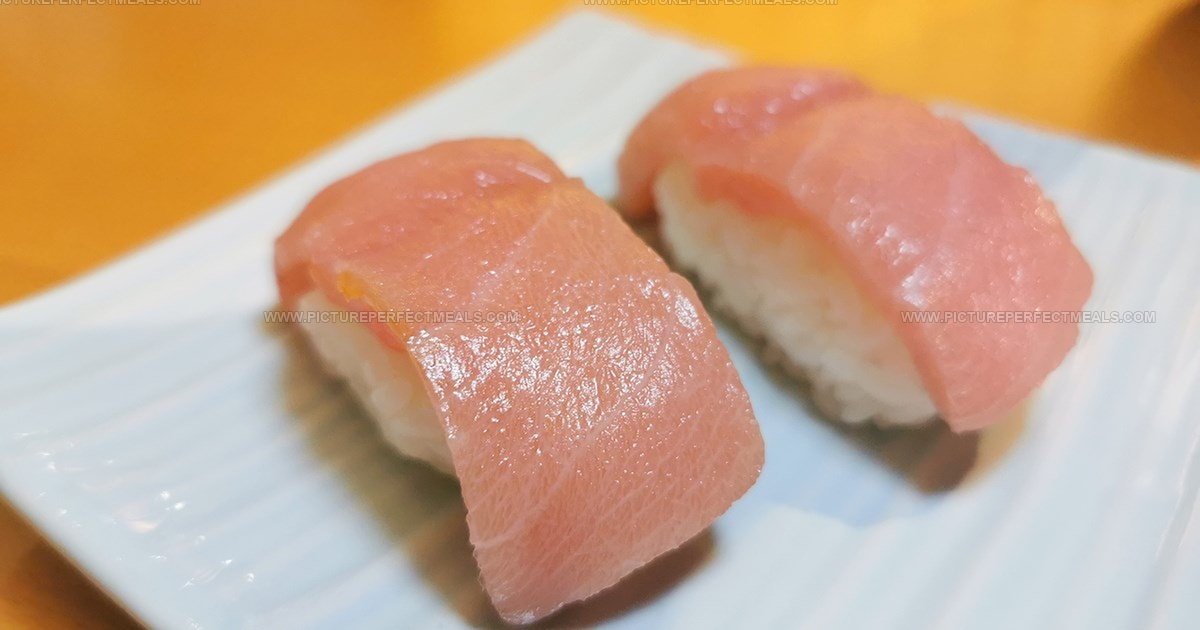






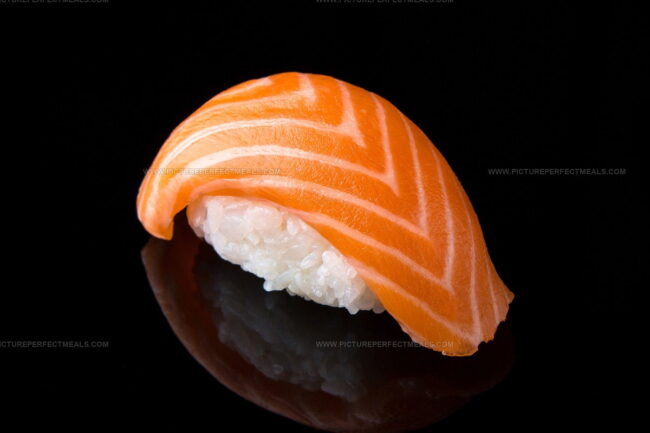
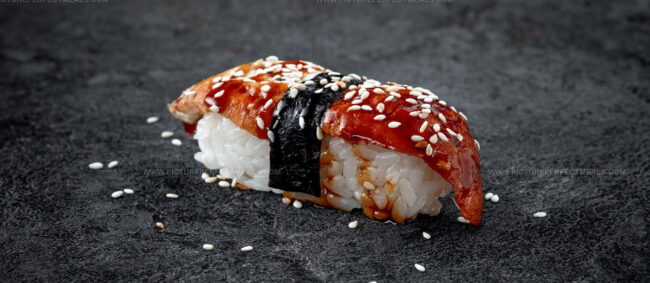
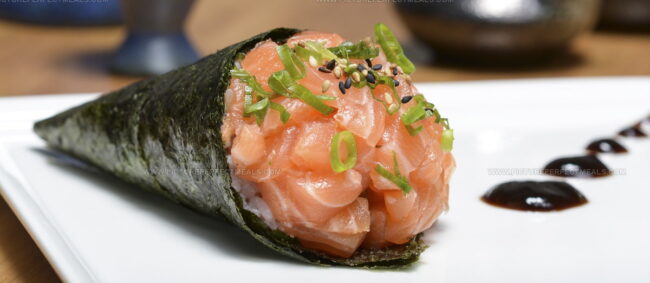








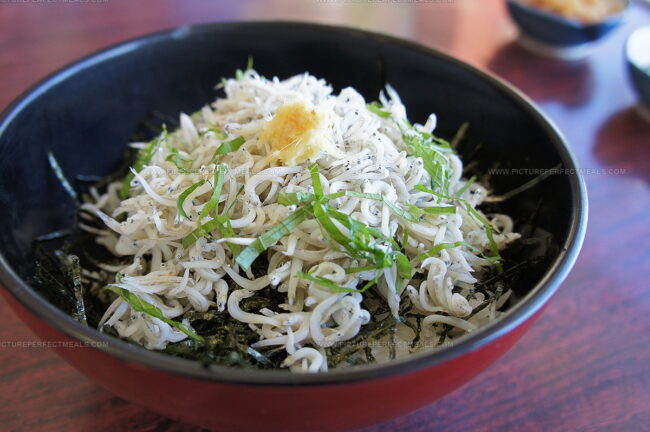

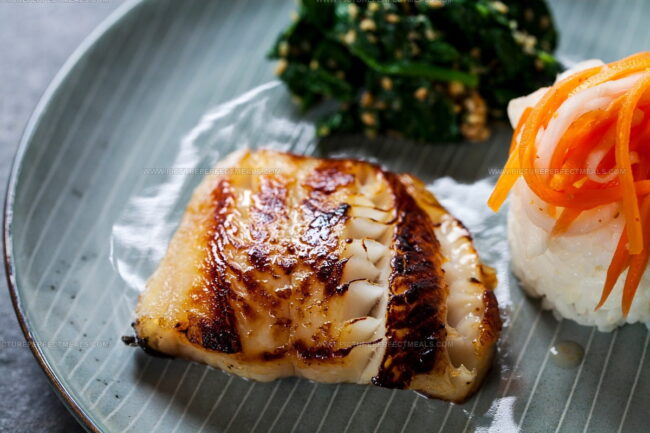



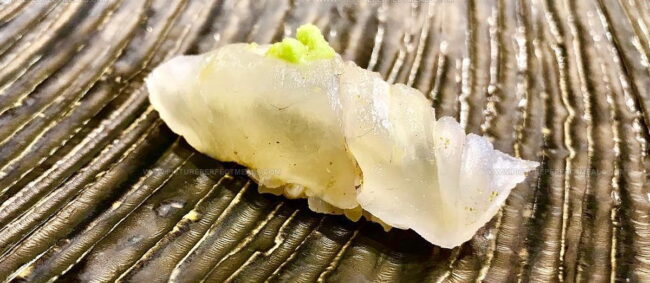

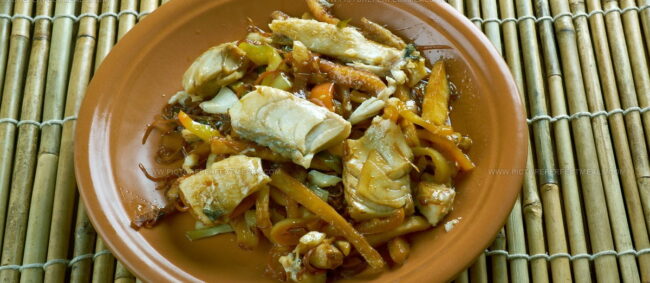



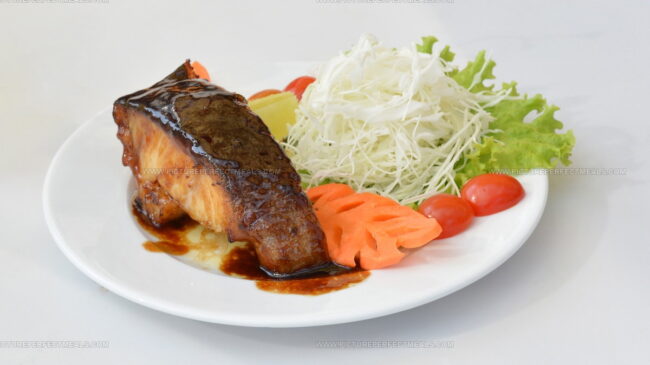


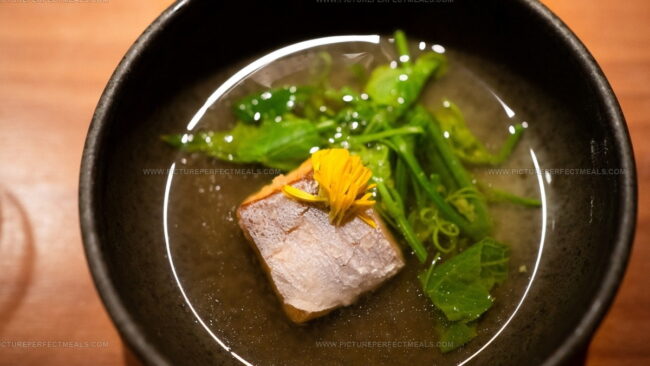
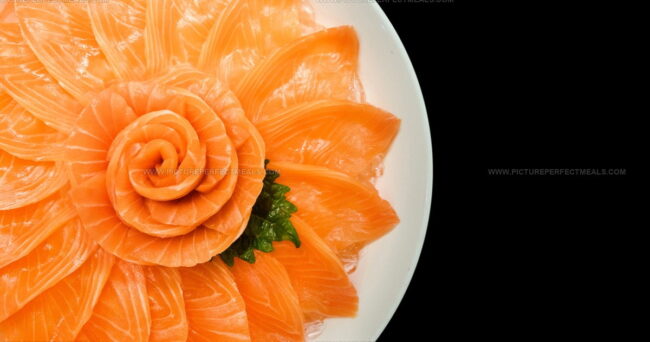
Daves Miller
Contributing Chef & Culinary Educator
Expertise
Education
Sullivan University, Louisville, Kentucky
White Mountains Community College, Berlin, New Hampshire
Daves is the friendly face guiding you through flavorful, fuss-free recipes at Picture Perfect Meals.
He studied culinary arts at Sullivan University and embraced Baking and Pastry Arts at White Mountains Community College. Daves specializes in comforting meals with vibrant flavors, highlighting fresh, seasonal ingredients.